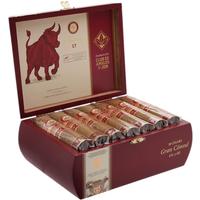So I just started smoking last year and heard a lot of dire warnings about not letting tabacco dry out etc.. never really understood why, especially when i let it dry out a bit before putting it in my bowl.
So i let one half used tin of my favorite go to balkan blend dry out totally, ie i left the lid untightened for 3 months and put it in the warmest place in the house i could find right next to a heating vent.
The stuff is dry... i mean preserved dry and if i roll it in my thumbs dust. So i loaded it up, it was a bit more difficult to pack but not unreasonably so. And it smoked just fine, in fact it still tastes pretty much exactly like a fresh tin im currently smoking i wouldnt be able to tell the difference from a smoke flavor perspective. So my big question is why does everyone care about not letting tabacco dry out?
Not all tobacco is the same Not all tobacco blends are the same.
Balkan blends contain highly aromatic components that will give you plenty of flavor, even when dried out to crumbly dry, as long as it's not sitting for years. Sitting for years, flavors will fade out, though they can sometimes be revied, at least partially, through rehydration.
If you like the flavors that you're getting and you're not planning on any sort of long term aging, smoking it dried out isn't going to be a problem for you. But if you do let it dry until there's almost no moisture content it may not develop deeper flavors over time, and may just go stale. Also, some nuances in the blend will go away when dried to dust.
One of my favorite blends, Haddo's Delight, becomes unsmokeable when it's dried and died in the tin. And there's no reviving it. I've tried a number of times. On the flip side I've revived Renaissance successfully.
Over the years I've spent a lot of time experimenting with moisture levels in the blends that I like to smoke. Since I smoke mostly Virginias I like them quite dry when I smoke them to get the most flavors out of them. But I don't like the flavors when Virginias are fully dried out.
Blends have a moisture sweet spot when they offer up their best. Too much moisture masks flavors, though this is less obvious with English/Balkan/Oriental blends. You don't need much of a technique to smoke that genre of blends.
Aromatics lose their flavors when dried out completely. Some moisture is needed to carry those essences to your flavor receptors. You're looking for a reduction rather than a thin broth.
Virginias will offer their nuances when nearly dry. They can taste like hot air when smoked too wet and they can really sting you. Virginias still have flavor when dried to a crumble, but some of those notes will be lost and gone forever. Again, depends on the blend.
If you want all the flavors that a blend can offer, you need some moisture to carry that flavor to you. The amount varies with the blend.
The flavors in a tobacco mostly come from the simmering tobacco surrounding the burning cherry. No moisture, no simmering, lost flavor. I don't want to smoke something that tastes predominantly of ash. I'm simplifying this a little, but this is basically how it works.
With the right moisture level I get to control the burn rate with cadence and packing so that I get the most flavor that the blend has to offer, keeping it simmering at the edge of going out.
I want to be able to control the moisture level when the time comes to smoke a bowl of a specific tobacco and I can't do that when it's all dried to dust. I can rehydrate, but that doesn't always restore the flavors. So while I sometimes dry down my tobacco before jarring, I leave enough moisture not to impair aging, or kill flavors.
Leave moisture in your blends until it's time to smoke them, then hit that sweet spot. Easy to do with Balkan/English/Oriental blends as they are very forgiving. Tricky to get right with aromatics where you want a reduction rather than a thin broth, and slightly less tricky to do with Virginias, or burleys.
Try experimenting with different moisture levels in a blend that you're smoking. You might be surprised with how the flavor balance shifts at different moisture levels.










